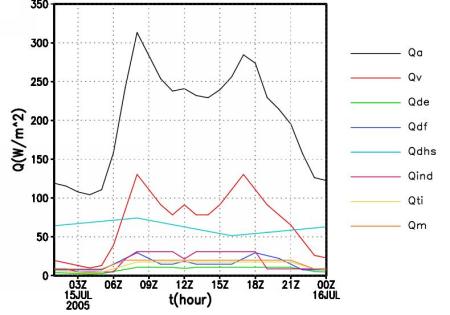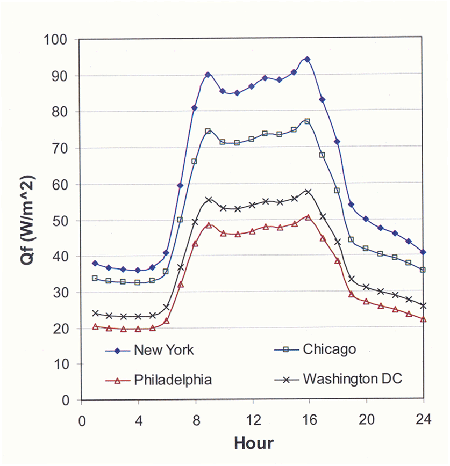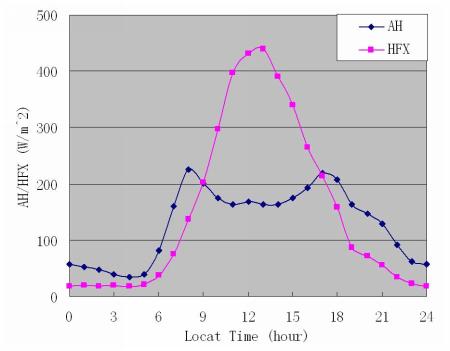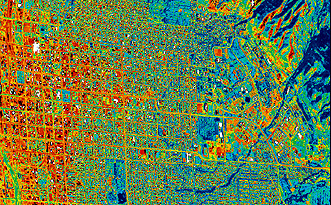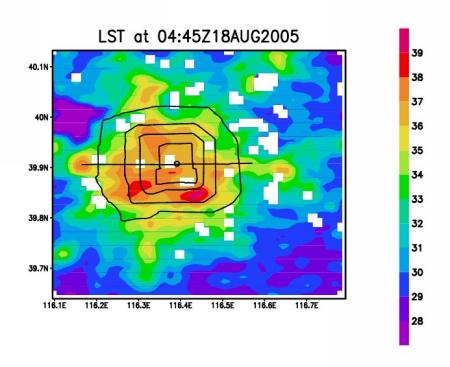Local Climate Part 4. Human Metabolism — What is that?
Friday, February 23rd, 2007Human metabolism isn’t the largest term in Figure 4 in the last blog, but you probably don’t think that you are a source of warming! David Sailor, of the Portland State University in Oregon, uses the number of calories we eat to estimate how much heat we give out. Basically, when we eat, we are stoking our furnaces!
If you have been to a large event in an indoor auditorium, you have experienced the effects of “human metabolism.” Especially if you, like me, like to get there early to get a good seat.
I first really noticed this at a school event at Whittier Elementary, where my children went to school. The auditorium, when we arrived, was cold. We didn’t take our jackets off at first. But as people started coming in, it got warmer and warmer. By the time the program started, everyone was quite warm, and all our jackets were off.
We can follow Sailor’s reasoning to estimate how much people are heating the auditorium. Suppose each person releases on the average 100 kilocalories an hour (the “calories” people refer to when referring to “watching their calories” are really kilocalories), and there are 300 people in the auditorium. The volume of the auditorium is 30 m x 20 m x 10 m, or 6,000 cubic meters. I assume the air density is 1 kilogram per cubic meter.
We need a conversion factor to translate “heating” into temperature change – that conversion factor is called the “specific heat”, which for air, is about 1000 in metric units.
I need to convert the kilocalories to Watts (Joules per Second) by multiplying by 4186 (Joules/Kilocalorie) and dividing by 3600 (seconds per hour) – to get about 116 Watts.
So
Total Heating = 300 people x 116 Watts per person = 34,800 Watts
Total amount (mass) of air being heated:
= 6,000 cubic meters x 1 kg /(cubic meter)
= 6000 kilograms
Temperature change per second = Total Heating divided by (Specific Heat x Mass)
= 34,800 divided by (6000 x 1000)
= 0.006 Celsius each second.
Meaning the 300 people raise the temperature by 0.006 degrees each second! So in a minute, 300 people heat the auditorium by about a third of a degree Celsius.
This calculation is only approximate, of course. I’m not sure how many calories children give off. People will open the doors to the auditorium to cool things off. And – if it gets too hot, people will start getting warmer themselves.
Can you think of other examples of human heat? You notice how you can warm your hands by blowing on them on a cold day? And why do you think you feel so toasty warm when you are under the covers (or in a sleeping bag) on a cold night?
Acknowledgments. Thanks to Shiguang Miao for his help with the Beijing Figures, Joseph Zehnder with supplying me with material on Phoenix, Bob Harriss with supplying me with NASA web sites for images of cities, Fei Chen for informative discussions, and David Sailor for Figure 5 and other useful information.
